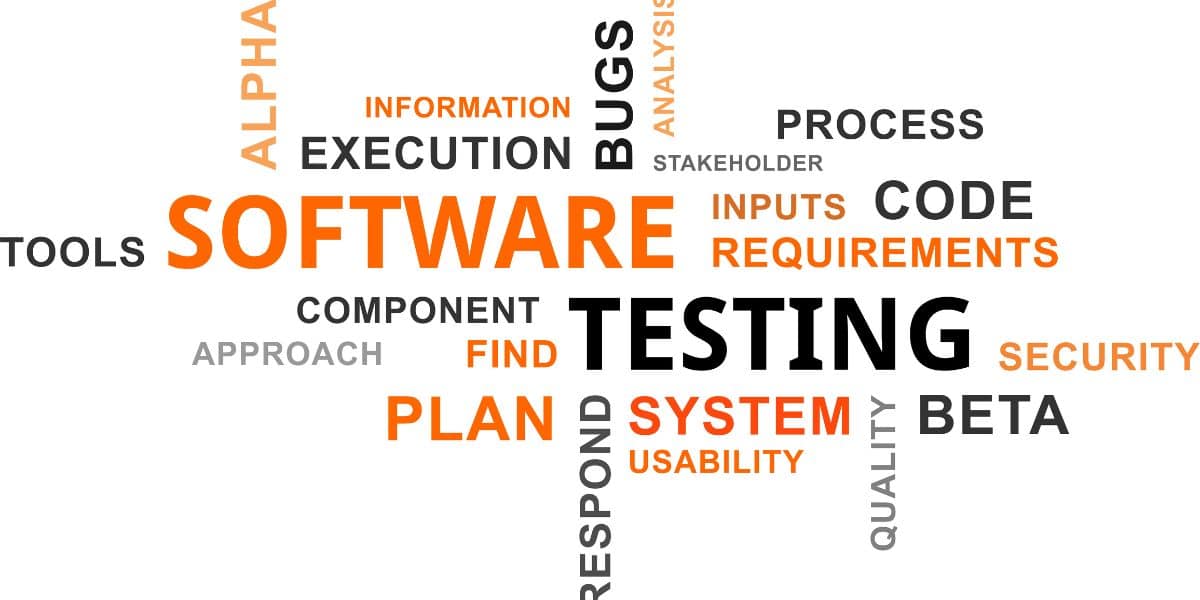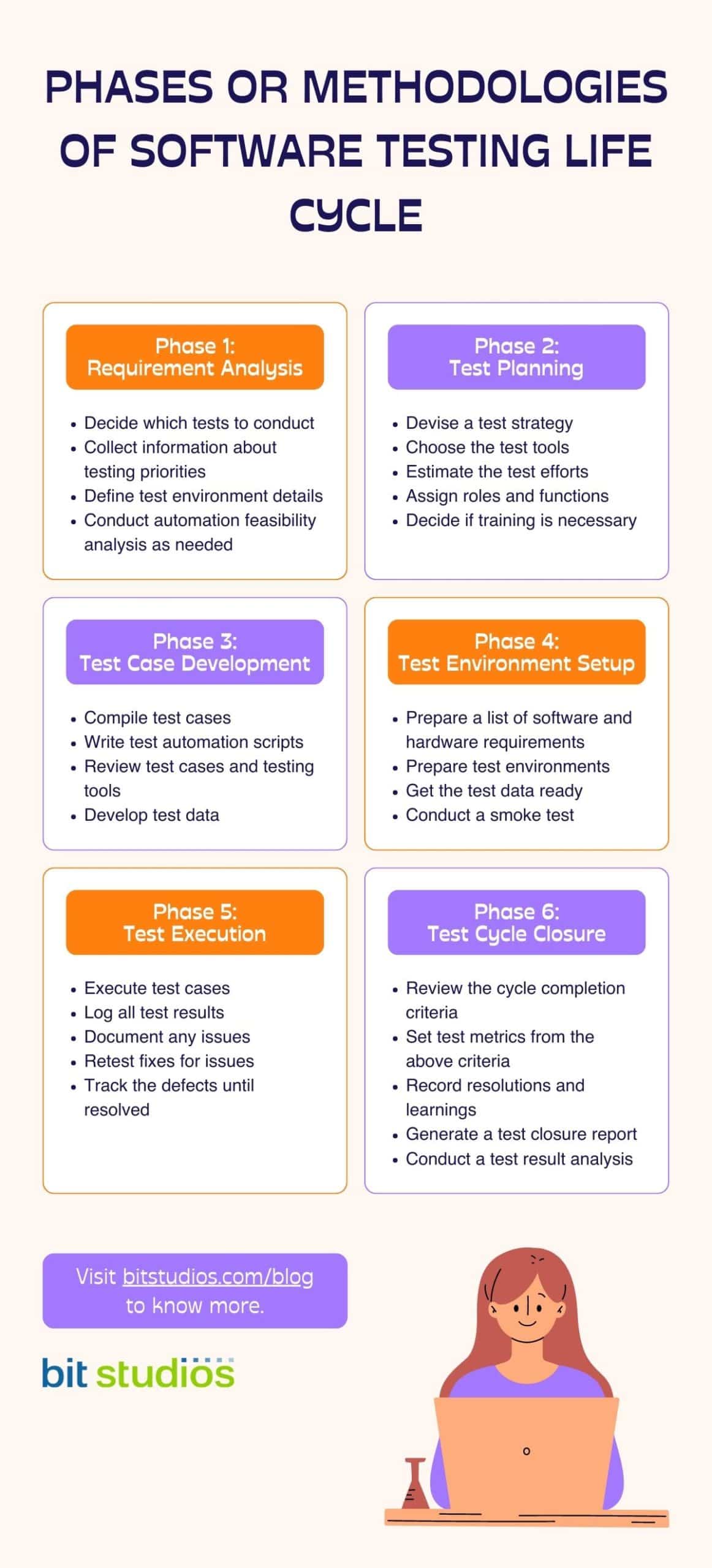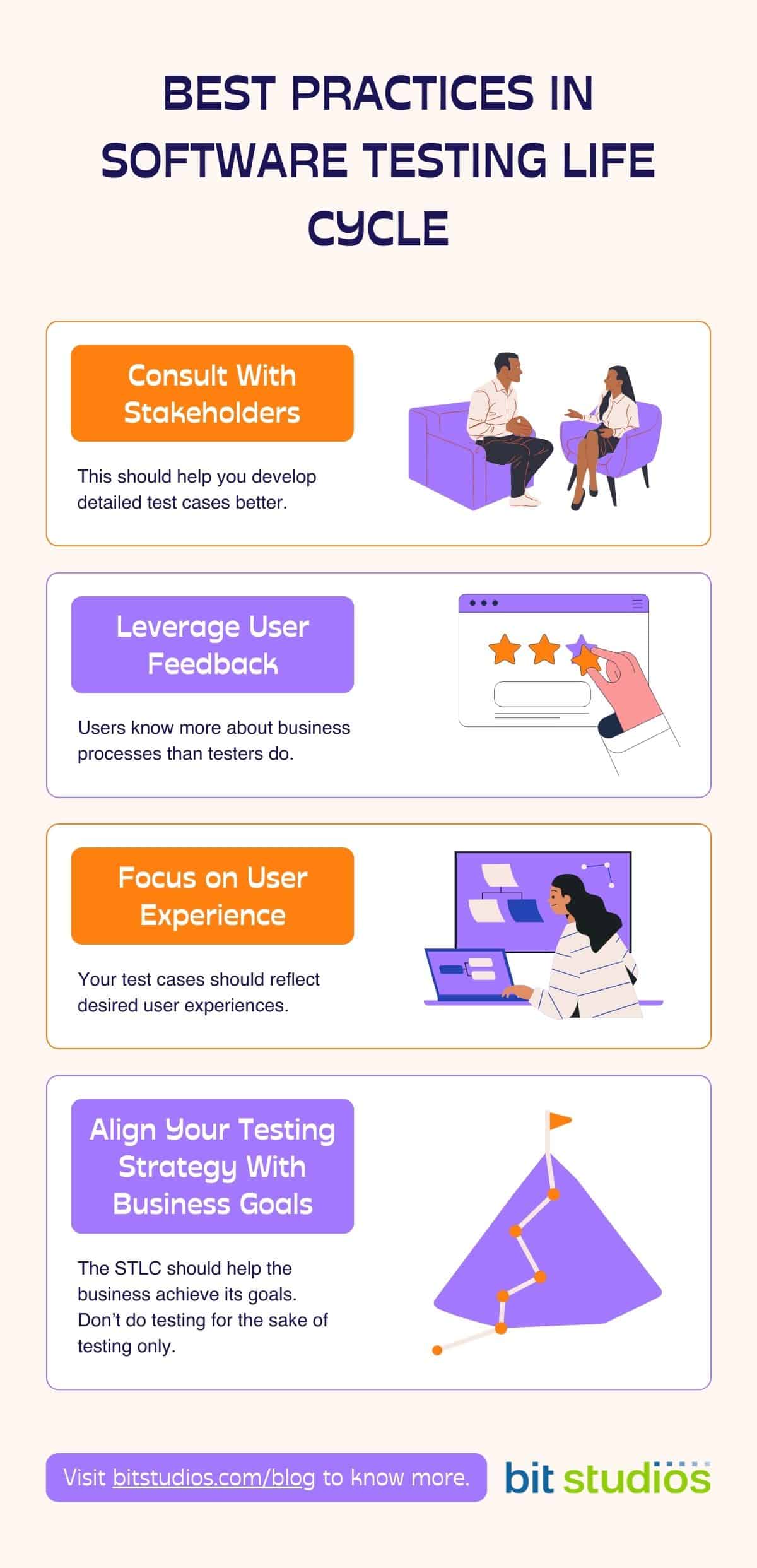What Is the Software Testing Life Cycle?
A Complete Guide

The market for software testing services in the US will hit $6.8 billion in 2022.
Indeed, the demand for quality software testing is as high as ever. Accordingly, you can’t overstate the importance of the software testing life cycle (STLC).
But what exactly is the STLC? And how are software development teams using it?
Let’s find out through this complete guide.
What Is Software Testing Life Cycle (STLC)?
What is STLC’s purpose? Its goal is to make sure that you meet all quality standards when testing. In other words, it ensures that you are doing the software testing right.
What is the software testing life cycle’s role in the whole development process? That’s what we are going to tackle next.
What Is the Role of Software Testing Life Cycle?

How does the software testing lifecycle fit into, well, everything? There is more than one answer.
It Fine-Tunes the Testing Process
The STLC provides a framework for proper testing procedures. Testers can use this framework to be more consistent in performing tests. With consistency comes better results.
It Sets Goals and Expectations
Testers can focus more if they know the objectives ahead. Also, knowing the expectations can help them deal with risks. The result is a more efficient testing process.
It Defines Timelines for Testing
The STLC helps you avoid never-ending tests. By defining timelines, you ensure the project is moving along. You won’t be stuck doing the same tests again and again.
It Streamlines Feature Testing
With the STLC, you can test each feature in a thorough manner. This is vital because it ensures that no feature is under-tested. Yes, you can add new features later. But you can rest easy knowing you have already tested every existing feature.
It Ensures You Meet All Project Requirements
Again, the STLC allows you to focus on what’s important. And that is meeting the project requirements first. Sure, you can test other aspects if you want. But the STLC dictates you fulfill the most vital goals before anything else.
Characteristics and Benefits of Software Testing Life Cycle (STLC)
![Characteristics and Benefits of Software Testing Life Cycle [Infographcis]](https://www.bitstudios.com/wp-content/uploads/2022/10/characteristics-and-benefits-of-software-testing-life-cycle-scaled.jpg)
What makes the software testing life cycle (STLC) unique? Let’s dive into its many characteristics.
It’s Part of the SDLC
Yes, the STLC is a process in itself. But it is an essential part of the broader software development life cycle (SDLC). You can think of it as a smaller process within a bigger process.
It Begins When Requirements Are Defined
The STLC starts earlier than you think. As soon as you identify the requirements, the cycle initiates. Contrary to what many people may think, it doesn’t begin during the actual testing.
It’s Very Structured
The STLC works because it adheres to a step-by-step process. This ensures that you meet quality standards. At the same time, it makes testing more efficient.
All this talk of STLC, software testing life cycle, characteristics, etc. – but wait! We haven’t even started talking about its benefits. So let’s get right to it then.
It Sets Standards for Testing
You can design tests more accurately, thanks to clear goals. Plus, the feature specs are defined ahead. This means you can map testing parameters ahead as well.
It Makes Testing Faster
The STLC provides clear steps to follow when testing software. Because of this, testers are never in doubt about what to do. This fast-tracks the testing process while reducing delays.
It Helps Track Testing Progress Better
You can track the testing progress better, thanks to the STLC. It organizes tests into clear STLC phases. Project managers can then check updates from each phase.
It Addresses Issues Early
You can detect bugs and defects early. More importantly, you can resolve them before they can get out of hand. Thanks to an approach designed to address issues quickly.
Phases or Methodologies of Software Testing Life Cycle

There are many STLC methodologies existing today. But in general, the lifecycle of testing a software involves the phases below.
Phase 1: Requirement Analysis
This is where the test team studies the project requirements. The aim here is to identify which components to test. The quality assurance (QA) team may need to interview stakeholders during this phase.
What happens in the requirements analysis phase:
- Decide which tests to conduct
- Collect information about testing priorities
- Define test environment details
- Conduct automation feasibility analysis as needed
Phase 2: Test Planning
This involves creating a test strategy. It should set the test limitations for the project. Also, the team should decide on the test schedule in this phase.
What happens in the test planning phase:
- Devise a test strategy
- Choose the test tools
- Estimate the test efforts (via test estimation document)
- Assign roles and functions
- Decide if training is necessary
Phase 3: Test Case Development
The testing life cycle in software testing isn’t complete without approved test cases. This is why test case development matters.
Any test case should align with the test strategy. You can develop test cases for manual testing and automated testing.
What happens during the test case development phase:
- Compile test cases
- Write test automation scripts
- Review test cases and test automation scripts (testing tools)
- Develop test data
Phase 4: Test Environment Setup
In this phase, you decide which testing environments to use. A testing environment refers to all the software and hardware test conditions. The development team may set up the test environment instead of the testing team.
What happens during the test environment setup:
- Prepare a list of software and hardware requirements
- Prepare test environments
- Ready the test data
- Conduct a smoke test (build acceptance test)
Phase 5: Test Execution
It’s time for the testers to execute the prepared test cases. The best practice is to use automated testing tools. During the test execution, the QA team must record all issues.
What happens during the test execution phase:
- Execute test cases
- Log all test results
- Document any issues
- Retest fixes for issues
- Track the defects until resolved
Phase 6: Test Cycle Closure
This phase involves performing closure activities after the test execution. One example is making a test completion report. This may include learnings gained from testing. Another test cycle closure activity is analyzing test results.
What happens during the test cycle closure phase:
- Review the cycle completion criteria
- Set test metrics from the above criteria
- Record resolutions and learnings
- Generate a test closure report
- Conduct a test result analysis
What Are Entry and Exit Criteria in STLC?

Entry and Exit Criteria are vital to the software testing life cycle (STLC). The reason is simple. They help make sure that you achieve your testing strategy goals. Moreover, they also ensure that you meet all the software product requirements.
But what exactly do the terms Entry Criteria and Exit Criteria mean? Let us find out.
Entry Criteria
The Entry Criteria is the list of items that are prerequisites before the start of testing. All STLC phases must have Entry and Exit Criteria.
Exit Criteria
The Exit Criteria lists all the items you need to finish before testing ends. Within the STLC, it’s best practice to precede each phase with Exit Criteria.
STLC vs. SDLC: How Do They Differ?

It is important to be able to distinguish between SDLC and STLC. For those who need help differentiating the two, here is a quick STLC vs. SDLC guide.
SDLC
- Applies to the software development process
- Includes testing and other development activities
- Involves the development team most of the time
- Happens before the STLC
- Involves all project members
STLC
- Applies to the software testing process
- Focuses on testing
- Involves the testing team most of the time
- Happens after the SDLC
- Involves a limited number of members
Now that we have discussed SDLC vs. STLC basics, it’s time we tackle another topic. And that is the importance of STLC in SDLC.
Is STLC Important in SDLC?
Yes, testing in software development life cycle matters. Let us count the ways.
- It ensures high quality. Products that undergo the STLC are more likely to have fewer quality-related issues.
- It provides learnings from test results. Development teams can use these learnings to code better.
- It generates test reports. Through these reports, management can decide whether to release the software or not.
- It erases bottlenecks. Undetected issues can cause problems in the future. By identifying them, the STLC helps teams avoid delays.
Okay, we have established the importance of software development life cycle testing. But have you ever wondered how STLC fits in a methodology? Like Agile, for instance?
How Does STLC Work in Agile?
To understand STLC in Agile, we need to look first into the basics of Agile itself.
Agile testing:
- Values interaction between members
- Focuses on function instead of documentation
- Promotes collaboration
So how does STLC fit in Agile?
- It makes Agile teams more efficient. They can verify that features are working before adding new ones.
- It helps Agile teams better manage their time. STLC sets timelines that keep projects moving forward.
- It allows Agile testing to be more organized. STLC defines precise roles for team members. Everyone knows their assignments, leaving no room for gaps.
Best Practices In Software Testing Life Cycle

What are some best practices you need to follow in the STLC? Check these out.
- Consult with stakeholders when defining the scope of testing. This should help you develop detailed test cases better.
- Leverage user feedback. Put more value on user feedback. Users may know more about business processes than testers do.
- Focus on user experience. Your test cases should always reflect desired user experiences.
- Align your testing strategy with business goals. In the end, the STLC should help the business achieve its goals. You shouldn’t do testing for the sake of testing only.
Conclusion
Yes, the software testing life cycle (STLC) is a part of the larger SDLC. But it doesn’t undervalue its importance.
Following the STLC can ensure the software meets product quality standards. It also allows a test team to be more efficient.
The STLC consists of several phases. Each phase serves a specific function. And you’d do well to respect their role in the testing procedure.
We hope you find this guide on software testing life cycle helpful. To know more about software testing, contact us today. We offer software testing services to businesses and startups.
Software Testing Life Cycle FAQs
Can You Skip STLC?
Yes, you can. But it doesn’t mean you should. Skipping STLC means inviting issues into your SDLC. After all, you design tests to detect defects in your software. If you do away with the testing, you run the risk of releasing a defective product. What if you don’t have a test team in place? You can still follow basic STLC principles. And that could go a long, long way.
When Should the Testing Process Be Introduced in the Software Development Lifecycle (SDLC)?
You can start as early as you can in the SDLC. By all means, introduce the testing procedure during the Requirements Gathering phase. The best practice is to do testing during the planning, designing, and coding stages.
What Documents and Reports Are Used in the STLC?
There are many documents and reports used across software testing life cycle phases.
Requirements Analysis:
- Requirements understanding document (RUD)
- Testing feasibility report
- Automation feasibility report
Test Planning:
- Test plan document
- Risk mitigation document
- Test estimation document
- Effort estimation documents
Test Environment Setup:
- Test conditions document
- Detailed test conditions document
Test Execution:
- Test execution report
- Defect report
Test Cycle Closure:
- Lessons learned document
- Test closure report
What are SDLC and STLC
The software development life cycle or SDLC is a framework that embedded software outsourcing companies use to produce high-quality software. It defines the necessary phases of software development and provides guidance on how to complete the phase.
The STLC on the hand, it’s goal is to make sure that you meet all quality standards when testing. In other words, it ensures that you are doing the software testing right.
We’re BIT Studios!
At BIT Studios we specialize in designing, building, shipping, and scaling beautiful, usable products with blazing-fast efficiency



